10 (at least) Christmas Traditions in the Spanish Speaking World
A number of festive celebrations, some religious and some secular, take place throughout the month of December around the Spanish speaking world, where the holiday season often extends well beyond the 24th and the 25th.
Countries located in the southern hemisphere that have strong Christmas traditions greet the season in the middle of their summer time, where culinary and decorative holiday traditions are adapted to warmer temperatures, as they are in tropical neighboring countries near or on the equator.
|
1. Spain
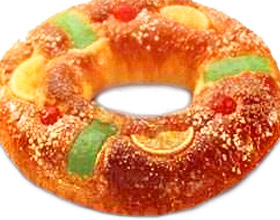 In Spain, despite great efforts from the biggest department stores to kick off the season in November, Christmas “officially” begins on December 22nd, the day of the Lotería de Navidad (Christmas lottery) prize drawing. Holiday cheer has over time taken a much less religious tone in Spain, a phenomenon that hasn’t been seen as much in Latin America. In any case, Christmas Eve (Nochebuena in Spanish) is a night for getting together with the family for lavish dinners complete with Cava wine and Spanish holiday sweets like turron and mantecados. The 28th is el día de los inocentes (the innocents’ Day), something like a Spanish version of April Fool’s Day, when you can expect people to place unexpected pranks on you. In Spain, despite great efforts from the biggest department stores to kick off the season in November, Christmas “officially” begins on December 22nd, the day of the Lotería de Navidad (Christmas lottery) prize drawing. Holiday cheer has over time taken a much less religious tone in Spain, a phenomenon that hasn’t been seen as much in Latin America. In any case, Christmas Eve (Nochebuena in Spanish) is a night for getting together with the family for lavish dinners complete with Cava wine and Spanish holiday sweets like turron and mantecados. The 28th is el día de los inocentes (the innocents’ Day), something like a Spanish version of April Fool’s Day, when you can expect people to place unexpected pranks on you.
Spaniards celebrate New Year’s Eve (Nochevieja in Spanish) by eating 12 grapes as the clock strikes 12 (las uvas de la suerte). The Christmas season draws to a close with the Cabalgata de Reyes (the parade for the 3 kings), held on the eve of January 6th (King’s Day). The parade serves as an exciting reminder that the magi have arrived from the east to bring gifts to good children and coal to not-so-good ones. On King’s Day, kids play outside with their new toys while anxiously waiting to eat their roscón de reyes (king’s cake).
|
|
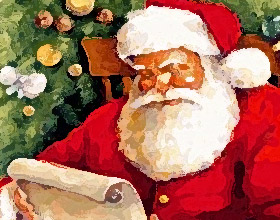 2. Chile 2. Chile
In Chile, children anxiously await the arrival of the Viejito Pascuero (as Santa Claus is known in Chile). Chileans also attend the misa del gallo (literally “rooster’s mass), a midnight mass offered on Christmas Eve.
|
|
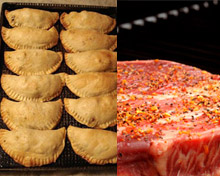 3. Argentina 3. Argentina
Christmas in Argentina: Argentines plan a special meal for the evening of the 24th in which everyone brings a different dish to contribute to the Christmas dinner. It’s also common to see “live nativity scenes” in churches around Argentina.
|
|
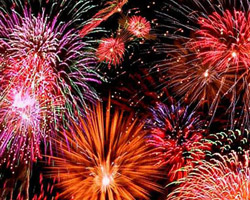 4. Uruguay 4. Uruguay
If you’re in Uruguay on Christmas Eve, don’t be surprised when you hear fireworks erupting at midnight as friends and family members toast one another with fresh cider. You may end up hanging out and having fun until late, but not to worry; you can spend Christmas Day relaxing on the beach (it’s summer in Uruguay).
|
|
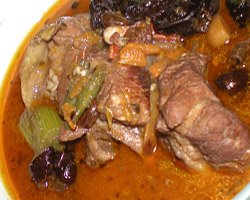 5. Bolivia 5. Bolivia
The cool Andean plateau lands of Bolivia can make you feel like nice energizing snack, and a bowl of picana does just the trick. This sweet and spicy, meat and veggie soup is traditionally enjoyed after misa del gallo and before late night processions in which participants parade a figure of baby Jesus through the streets of town.
|
|
 6. Dominican Republic 6. Dominican Republic
It’s not easy to imagine snow falling in the Dominican Republic. Dominicans have however adopted a tradition that reflects northern images of snowy Christmas landscapes by painting Christmas trees white.
|
|
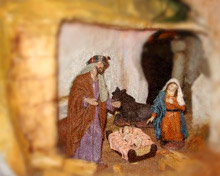 7. The Tradition of Las Posadas 7. The Tradition of Las Posadas
Countries such as Mexico, Honduras and Venezuela have kept a tradition alive known as las posadas as reminder of all the challenges described in the Bible which Joseph and Mary faced while searching for temporary lodging just before the birth of Jesus.
|
|
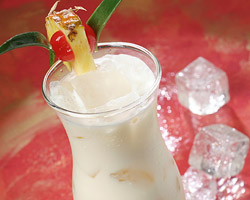 8. Honduras 8. Honduras
In Honduras, when you visit with friends and neighbors during las posadas, you can be expected to be offered rompopo (a type of alcoholic punch made with milk and egg) or ponche infernal, which although has a scary name is a comfortable drink made of pineapple, cinnamon, clove, pepper, rum, water and sugar… not appropriate for kids.
|
|
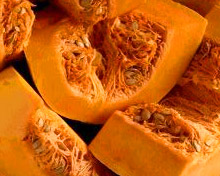 9. Paraguay 9. Paraguay
In a country where Guarani shares official language status with Spanish, ryguazy (chicken) or turkey is served up on Christmas Eve with kiveve, a traditional meal prepared from andai (calabaza).
|
|
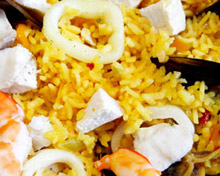 10. Nicaragua 10. Nicaragua
If you’re in Nicaragua around Christmas, don’t be surprised to see arroz a la valenciana (Valencian-style rice) on the dinner table. This Nicaraguan version of paella is a traditional meal in Central America on Christmas Eve.
|
In many Latin American countries it’s common for the Christmas period to extend from the middle of December until well into the new year and beyond King’s Day (January 6th). On December 7th in Guatemala, they burn an effigy of the Devil, and on that same day in Colombia it’s el día de las velitas (Day of the Little Candles) when candles are placed everywhere to honor the Virgin Mary. In Honduras, Mexico and Venezuela, starting from December 16th, the nine-day Posadas celebration begins. In many of these places, the Christmas season doesn’t draw to a close until the day of Candelaria on February 2nd.

 In Spain, despite great efforts from the biggest department stores to kick off the season in November, Christmas “officially” begins on December 22nd, the day of the Lotería de Navidad (Christmas lottery) prize drawing. Holiday cheer has over time taken a much less religious tone in Spain, a phenomenon that hasn’t been seen as much in Latin America. In any case, Christmas Eve (Nochebuena in Spanish) is a night for getting together with the family for lavish dinners complete with Cava wine and Spanish holiday sweets like turron and mantecados. The 28th is el día de los inocentes (the innocents’ Day), something like a Spanish version of April Fool’s Day, when you can expect people to place unexpected pranks on you.
In Spain, despite great efforts from the biggest department stores to kick off the season in November, Christmas “officially” begins on December 22nd, the day of the Lotería de Navidad (Christmas lottery) prize drawing. Holiday cheer has over time taken a much less religious tone in Spain, a phenomenon that hasn’t been seen as much in Latin America. In any case, Christmas Eve (Nochebuena in Spanish) is a night for getting together with the family for lavish dinners complete with Cava wine and Spanish holiday sweets like turron and mantecados. The 28th is el día de los inocentes (the innocents’ Day), something like a Spanish version of April Fool’s Day, when you can expect people to place unexpected pranks on you. 2. Chile
2. Chile 3. Argentina
3. Argentina 4. Uruguay
4. Uruguay 5. Bolivia
5. Bolivia 6. Dominican Republic
6. Dominican Republic 7. The Tradition of Las Posadas
7. The Tradition of Las Posadas 8. Honduras
8. Honduras 9. Paraguay
9. Paraguay 10. Nicaragua
10. Nicaragua